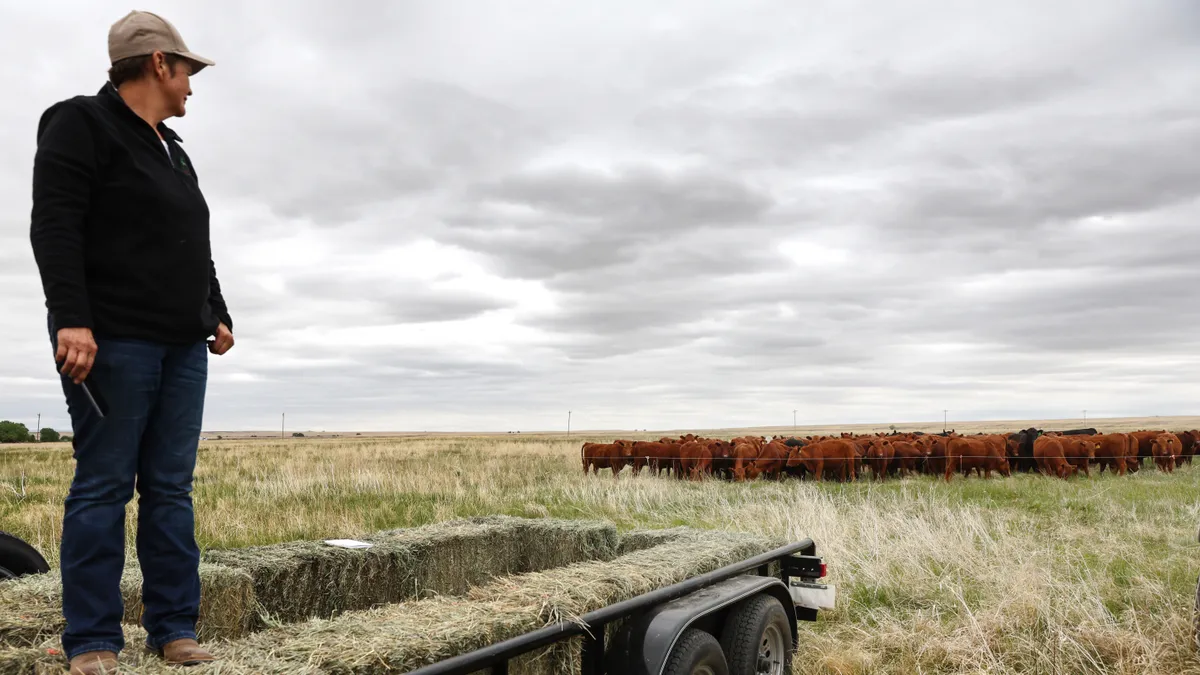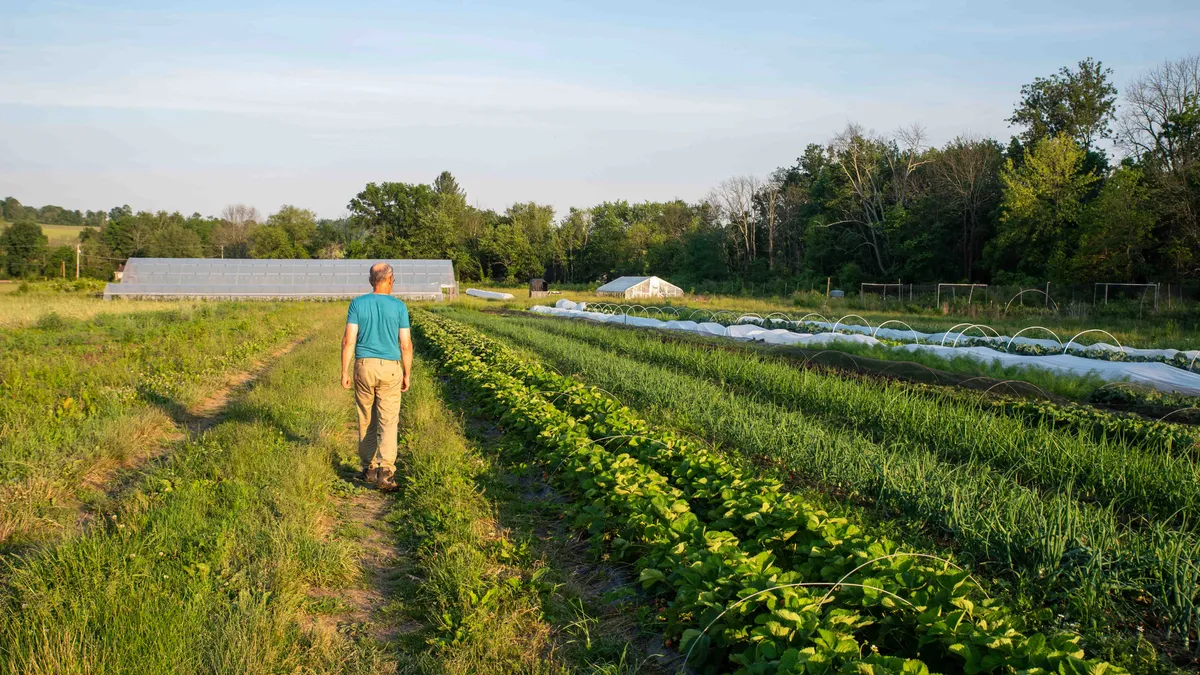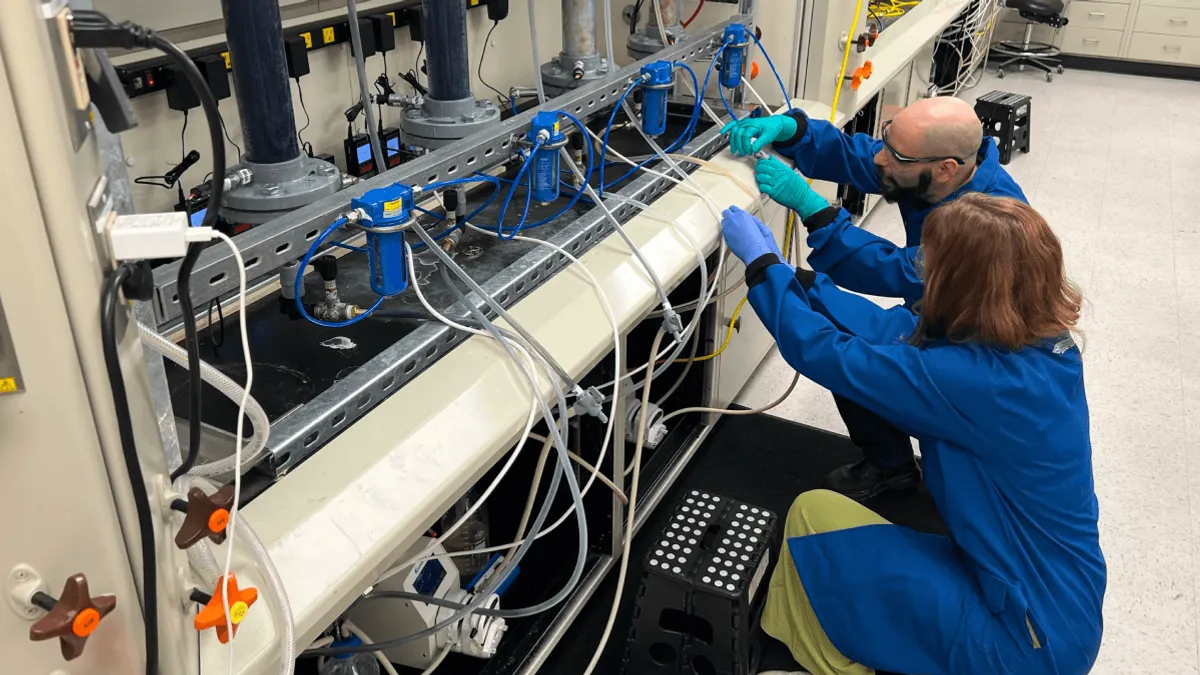Momentum on the long-stalled farm bill is picking up after congressional leaders released competing plans for the $1.5 trillion spending package this week, and stakeholders are cautiously optimistic that an agreement could be reached before the current law expires.
"It is really heartening to see movement in both chambers, which makes me hopeful that we might see a farm bill passed this year," said Cristel Zoebisch, director of policy of Carbon180, a non-governmental organization that champions carbon sequestration in industries including agriculture. "But we want to make sure that we get it right."
Dueling farm bill frameworks from the House and Senate show lawmakers still need to overcome a partisan split on food assistance and climate funding. Environmental and anti-hunger advocates are closely watching for changes to climate-smart agriculture or the Supplemental Nutrition Assistance Program, formerly known as food stamps.
Still, farm groups — who are pushing for a bill to be passed as soon as possible — initially applauded both plans for expanding investment in conservation, trade, commodity insurance and other support programs. American Farm Bureau Federation President Zippy Duvall called on farm bill negotiators to come to a consensus and pass a bipartisan bill before the year's end.
"We’re encouraged to see both proposals acknowledge that programs farmers and ranchers across the country use require additional investment in the face of falling commodity prices and increased inflation," Duvall said in a statement. "Details are important, however, and there is still a lot of work to do."
Nutrition groups say House plan cuts food aid
Republicans' plan to once again freeze costs of the Thrifty Food Plan, which determines the maximum amount of benefits participants receive under SNAP, has sparked broad pushback from Democrats and anti-hunger groups alike.
The Thrifty Food Plan is meant to estimate the cost of a healthy diet on a limited budget, though assistance levels have remained stagnant due to a congressional mandate to keep benefits cost neutral, or unchanged when adjusted for inflation.
SNAP participants recently received the first increase in real dollars after Congress removed the cost-neutral requirement and directed the Biden administration to overhaul how it calculates benefits to include a fuller picture of consumption patterns and dietary guidelines. However, as Republicans scrounge for funds to invest in other farm priorities amid a tight budgetary environment, House Agriculture Committee Chair Glenn "GT" Thompson wants to move the Thrifty Food Plan back to a cost-neutral formula.
A return to cost neutrality would save money and prevent the executive branch from “arbitrarily increasing or decimating” benefits, according to Thompson. However, food groups say eliminating future benefit adjustments will translate in tens of billions of dollars in cuts over a decade.
"Restricting the ability to be able to make changes using science in the Thrifty Food Plan translates into a cut," said Eric Mitchell, president of the Alliance to End Hunger. "Instead of looking for opportunities to try to make food more affordable, this proposal makes it even more expensive to put food on the table for families,"
Senate Agriculture Chairwoman Debbie Stabenow has vowed to fight any changes to the benefits funding formula, which she considers a "red line." Food and nutrition groups have lauded Stabenow's plan for retaining the ability to adjust benefits, increasing funding for food banks and expanding access for military families and individuals convicted of a drug related felony.
"In times where food prices have gone up, conflicts around the world are making food insecurity increase globally, we need to come together and use the farm bill to really address this situation in a bipartisan way," Mitchell said.
Debate over climate-smart agriculture guardrails
Both House and Senate plans would invest tens of billions of dollars in additional funding from the Inflation Reduction Act into the conservation title. However, Democrats' proposal would contain additional guardrails that climate advocates say are needed to ensure funding is actually used for sustainable agriculture practices.
“Senator Stabenow has released a Farm Bill that will promote climate-smart farming, expand nutrition programs, and protect our environment, and we hope to see the House pass the Senate version of the bill," Sierra Club Lands Protection Program Director Athan Manuel said in a statement. "The Farm Bill will have a huge impact not only on farming and what it will look like for at least the next five years, but also food access, forestry, land and water pollution, and our climate."
Zoebisch of Carbon180 said Stabenow's plan would also further U.S. efforts to expand regenerative agriculture by creating a standardized and consistent system for soil carbon monitoring. The bill also promotes carbon sequestration in forests and makes soil data publicly available for researchers to compare the effectiveness of various conservation practices.
While there are still questions over details and exact funding levels, most stakeholders stressed the importance of approving a farm bill this year rather than passing a one-year extension.
"We are running out of time and have to take any and every opportunity that we can to advance climate mitigation," Zoebisch said. "We can't just keep the wheels turning without really addressing the most pressing challenges across farm country.”
Correction: In a previous version of this story, the name of the climate non-governmental organization and Cristel Zoebisch's title were misidentified. It is Carbon180 and she is director of policy.



















